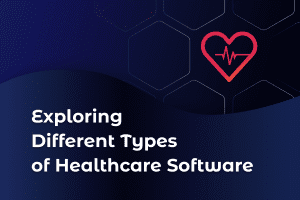Contents
- The Impact of Information Technology in Healthcare Industry
- What is Health Information Technology (HIT)
- What Impact the Information Technology Had on Healthcare and Medicine So Far?
- Want to develop a custom software solution?
- Why Healthcare Industry Relies on Information Technology
- 5 Important Benefits of Information Technology and Applications for Healthcare
- Want to develop a custom software solution?
- What is the Future of IT in the Healthcare Sector?
- Top 7 Healthcare Technology Trends And Innovations
- Want to develop a custom software solution?
- How Can Scimus Help?
The Impact of Information Technology in Healthcare Industry
Information Technology (IT) has transformed various industries, and healthcare is no exception. The use of information technology for health has brought significant improvements in patient care, communication and coordination between healthcare providers, efficiency, and productivity. It has also helped in decision-making, diagnosis, reduced healthcare costs, and improved patient safety and quality of care.
The healthcare industry has seen a massive shift from paper-based record-keeping to electronic health records (EHRs), telemedicine, mobile health (mHealth), patient portals, wearable health devices, artificial intelligence (AI) and machine learning (ML), and the Internet of Things (IoT).
In this blog post, we will discuss the impact of technology in healthcare, the benefits and challenges of implementing IT solutions, examples of IT used in healthcare, importance of technology in healthcare, and the future potential of IT in healthcare.
What is Health Information Technology (HIT)
Health Information Technology (HIT) refers to the use of technology in healthcare to manage and exchange health information electronically. HIT includes the development, implementation, and management of computerized systems that capture, store, process, and exchange health-related information. HIT plays a vital role in improving patient care, enhancing the quality of care, and increasing the efficiency and productivity of healthcare services.
HIT includes various systems such as Electronic Health Records (EHRs), Computerized Physician Order Entry (CPOE), Clinical Decision Support Systems (CDSS), telemedicine, patient portals, mobile health (mHealth), wearable health devices, and artificial intelligence (AI) and machine learning (ML). These technologies in healthcare help providers to access, manage, and share patient health information securely, and enable patients to manage their health records and engage in their healthcare more actively.
The use of HIT in the healthcare industry has enabled healthcare providers to streamline their operations, improve patient outcomes, reduce medical errors, and lower healthcare costs. HIT has transformed the healthcare industry, and its impact is likely to continue to grow as new technologies emerge.
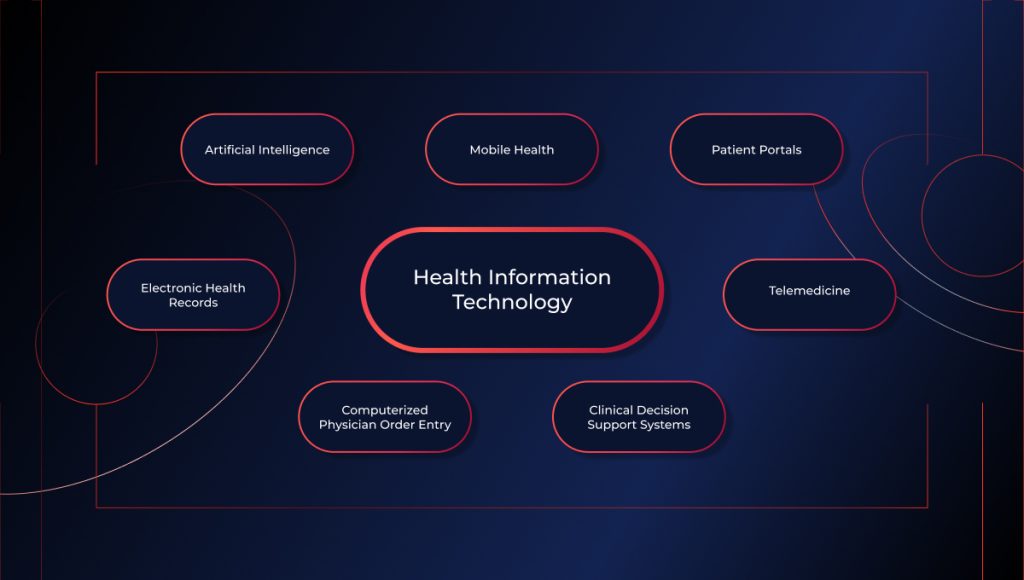
What Impact the Information Technology Had on Healthcare and Medicine So Far?
The impact of healthcare information technologies has been significant. Here are some of the ways IT has affected healthcare so far:
- Improved Patient Care: With the help of health information systems, healthcare providers can access and share patient health records in real-time. This enables them to provide better-coordinated care and make more informed decisions about patient treatment plans. In addition, telemedicine and mHealth have enabled remote monitoring and virtual consultations, allowing patients to receive care from the comfort of their homes.
- Increased Efficiency and Productivity: Health information technology has helped healthcare providers to streamline their operations and workflows. With electronic health records (EHRs) and computerized physician order entry (CPOE), healthcare providers can document patient care, prescribe medications, and order tests more efficiently. This has resulted in increased productivity and reduced administrative burdens.
- Improved Decision-Making and Diagnosis: The use of clinical decision support systems (CDSS) has enabled healthcare providers to make more informed decisions about patient care. CDSS provides evidence-based recommendations, alerts, and reminders, helping healthcare providers to make accurate diagnoses and prescribe appropriate treatments.
- Reduced Healthcare Costs: Health information technology has the potential to reduce healthcare costs by minimizing errors, improving patient outcomes, and reducing readmissions. EHRs have also helped to reduce the cost of record-keeping, storage, and retrieval, and eliminated the need for paper-based records.
- Improved Patient Safety and Quality of Care: Health information technology has helped to reduce medical errors and improve patient safety by providing access to complete and accurate patient information. In addition, the use of barcoding and scanning technologies has reduced medication errors, and the implementation of clinical decision support systems has improved the quality of care.
Overall, the technology impact on healthcare and medicine has been transformative. It has improved patient care, increased efficiency and productivity, improved decision-making and diagnosis, reduced healthcare costs, and improved patient safety and quality of care.
Want to develop a custom software solution?
Why Healthcare Industry Relies on Information Technology
The healthcare industry relies on information technology for several reasons, including:
- Improved Coordination and Communication: Health information technology has improved communication and coordination between healthcare providers. With the help of electronic health records (EHRs), healthcare providers can access patient health records in real-time and share them securely with other providers involved in the patient’s care. This has resulted in better-coordinated care and improving healthcare outcomes.
- Improved Efficiency: Health information technology has helped to streamline administrative processes, such as record-keeping, scheduling, and billing. This has resulted in increased efficiency and productivity, allowing healthcare providers to focus more on patient care.
- Enhanced Patient Safety: Health information technology has helped to reduce medical errors and improve patient safety by providing access to complete and accurate patient information. EHRs and clinical decision support systems (CDSS) provide healthcare providers with alerts, reminders, and evidence-based recommendations, helping them to make more informed decisions about patient care.
- Improved Access to Healthcare: Health information technology has made healthcare more accessible to patients. With the help of telemedicine and mobile health (mHealth) technologies, patients can receive care from the comfort of their homes. Patient portals and mobile health apps have also enabled patients to access their health records, communicate with their healthcare providers, and manage their health more actively.
- Lower Healthcare Costs: Health information technology has the potential to reduce healthcare costs by minimizing errors, improving patient outcomes, and reducing readmissions. EHRs have helped to reduce the cost of record-keeping, storage, and retrieval, and eliminated the need for paper-based records.
Overall, use of technology in patient care enhances efficiency, reduces medical errors, and lowers healthcare costs. Health information technology has transformed the healthcare industry and is likely to continue to do so as new technologies emerge.
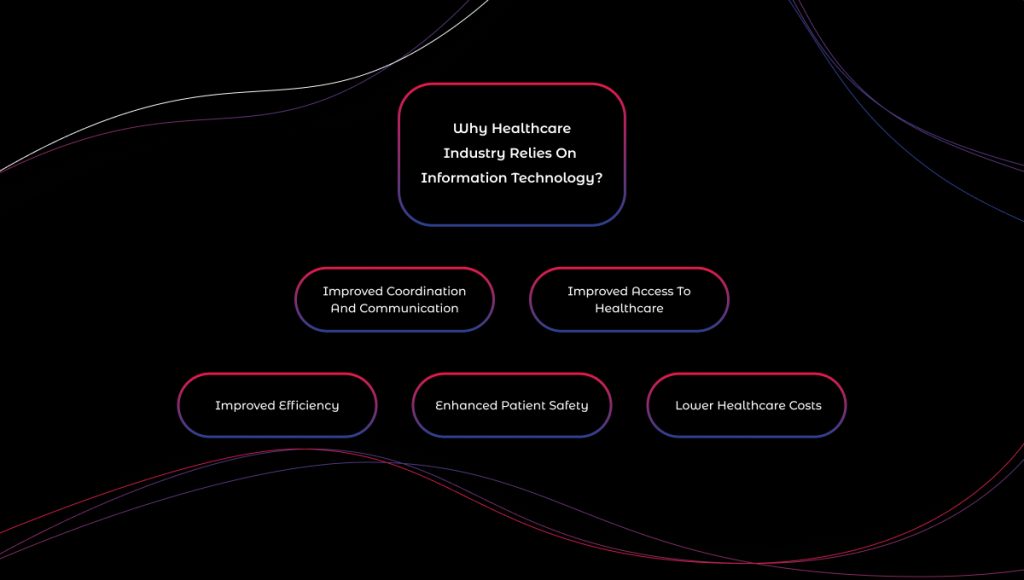
5 Important Benefits of Information Technology and Applications for Healthcare
Here are five important advantages of information technology for healthcare:
Improved Quality of Care
Health information technology and applications have significantly improved the quality of care provided to patients. Electronic health records (EHRs) provide healthcare providers with real-time access to a patient’s health history, medications, allergies, and laboratory results. Clinical decision support systems (CDSS) provide healthcare providers with evidence-based recommendations, alerts, and reminders, helping them to make more informed decisions about patient care. Telemedicine and mobile health (mHealth) technologies enable patients to receive care from the comfort of their homes.
Increased Efficiency and Productivity
Health information technology and applications have streamlined administrative processes, resulting in increased efficiency and productivity. EHRs and computerized physician order entry (CPOE) have reduced paperwork and eliminated the need for paper-based records. Patient portals and mobile health apps have enabled patients to schedule appointments, communicate with their healthcare providers, and manage their health records more efficiently.
Improved Patient Safety
Health information technology and applications have helped to reduce medical errors and improve patient safety. EHRs provide healthcare providers with complete and accurate patient information, reducing the risk of medication errors, allergies, and adverse reactions. Barcoding and scanning technologies have reduced medication administration, and CDSS provide healthcare providers with alerts and reminders, helping them to make more informed decisions about patient care.
Cost Savings
Health information technology and applications have the potential to reduce healthcare costs significantly. EHRs have reduced the cost of record-keeping, storage, and retrieval, and eliminated the need for paper-based records. Telemedicine and mHealth technologies have reduced the need for hospital visits, resulting in cost savings for patients and healthcare providers.
Improved Access to Care
Health information technology and applications have improved access to care for patients. Telemedicine and mHealth technologies have made it possible for patients to receive care from the comfort of their homes. Patient portals and mobile health apps have enabled patients to communicate with their healthcare providers, schedule appointments, and access their health records more efficiently.
In conclusion, health information technology and applications have revolutionized the healthcare industry, resulting in improved quality of care, increased efficiency and productivity, improved patient safety, cost savings, and improved access to care.
Want to develop a custom software solution?
What is the Future of IT in the Healthcare Sector?
The future of information technologies in healthcare is exciting and holds a lot of potential. Here are some possible advancements that we may see in the coming years:
- Artificial Intelligence (AI) and Machine Learning (ML): AI and ML are already being used in healthcare for applications such as disease diagnosis, drug discovery, and personalized medicine. In the future, AI and ML could help healthcare providers to make more informed decisions about patient care, predict disease outbreaks, and automate administrative tasks.
- Internet of Medical Things (IoMT): The IoMT involves the use of interconnected medical devices and sensors to collect and transmit patient health data. In the future, these medical information technologies could enable remote monitoring of patients, early detection of health issues, and personalized treatment plans.
- Blockchain: Blockchain technology has the potential to improve the security and privacy of patient data, reduce healthcare fraud, and streamline administrative processes. In the future, blockchain could be used to securely store and share human health records, and facilitate the exchange of healthcare information between providers.
- Augmented and Virtual Reality: Augmented and virtual reality technologies could be used in healthcare for applications such as medical training, surgical planning, and patient education. In the future, these technologies could become more widespread and accessible, improving the quality of care provided to patients.
- Precision Medicine: Precision medicine involves tailoring treatments to the unique genetic makeup of each patient. In the future, advances in genomics and other technologies could enable healthcare providers to develop personalized treatment plans for patients based on their individual health data.
Overall, the future of IT in the health sector is bright, with many exciting advancements on the horizon. These advancements have the potential to improve the quality of care provided to patients, reduce healthcare costs, and revolutionize the way that healthcare is delivered.
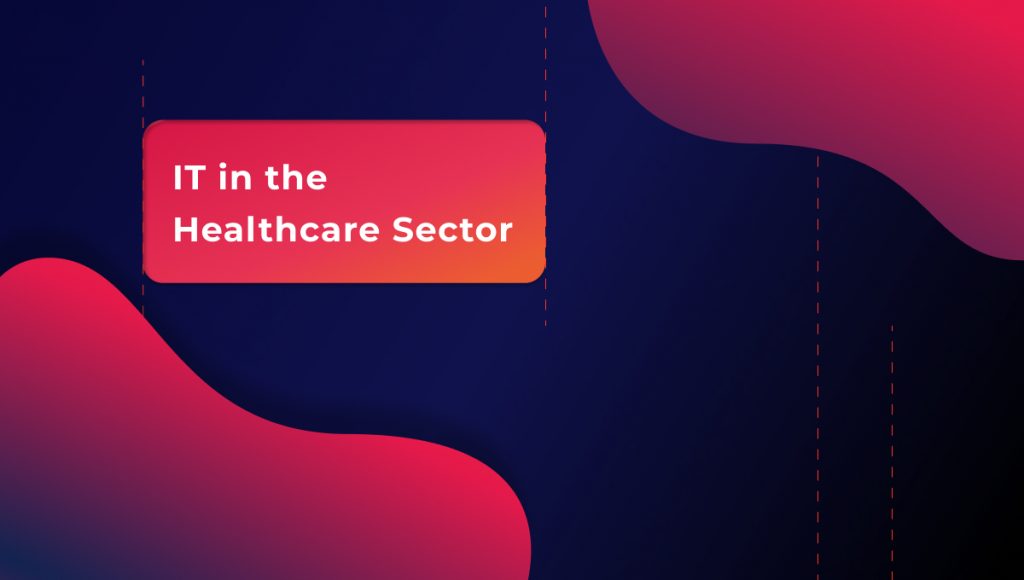
Top 7 Healthcare Technology Trends And Innovations
Here are the top 7 healthcare technology trends and innovations that are transforming the healthcare industry:
Artificial Intelligence (AI)
AI is being used in healthcare to automate administrative tasks, detect diseases earlier, and personalize treatment plans. AI-powered chatbots are also being used to provide patients with basic medical advice and assistance.
Internet of Medical Things (IoMT)
The IoMT involves the use of interconnected medical devices and sensors to collect and transmit patient health data. The data can be used to remotely monitor patients, detect health issues early, and improve treatment outcomes.
Telemedicine
Telemedicine is the use of videoconferencing and other communication technologies to provide medical care to patients remotely. Telemedicine enables patients to receive medical care from the comfort of their homes, improving access to care and reducing healthcare costs.
Want to develop a custom software solution?
Wearable Technology
Wearable technology, such as smartwatches and fitness trackers, is being used to collect and transmit patient health data. The data can be used to monitor patients’ vital signs, track their physical activity, and detect health issues early.
3D Printing
3D printing is being used in healthcare to create custom prosthetics, dental implants, and other medical devices. 3D printing enables healthcare providers to create personalized medical devices that are more comfortable and effective for patients.
Blockchain
Blockchain technology is being used in healthcare to improve the security and privacy of patient data, reduce healthcare fraud, and streamline administrative processes. Blockchain can be used to securely store and share patient health records, and facilitate the exchange of healthcare information between providers.
Augmented and Virtual Reality
Augmented and virtual reality technologies are being used in healthcare for applications such as medical training, surgical planning, and patient education. These technologies enable healthcare providers to provide more realistic and immersive training experiences and help patients better understand their medical conditions.
In conclusion, these healthcare technology trends and innovations are transforming the way that healthcare is delivered, improving access to care, reducing healthcare costs, and improving treatment outcomes. As technology continues to advance, we can expect to see even more exciting advancements in the healthcare industry.
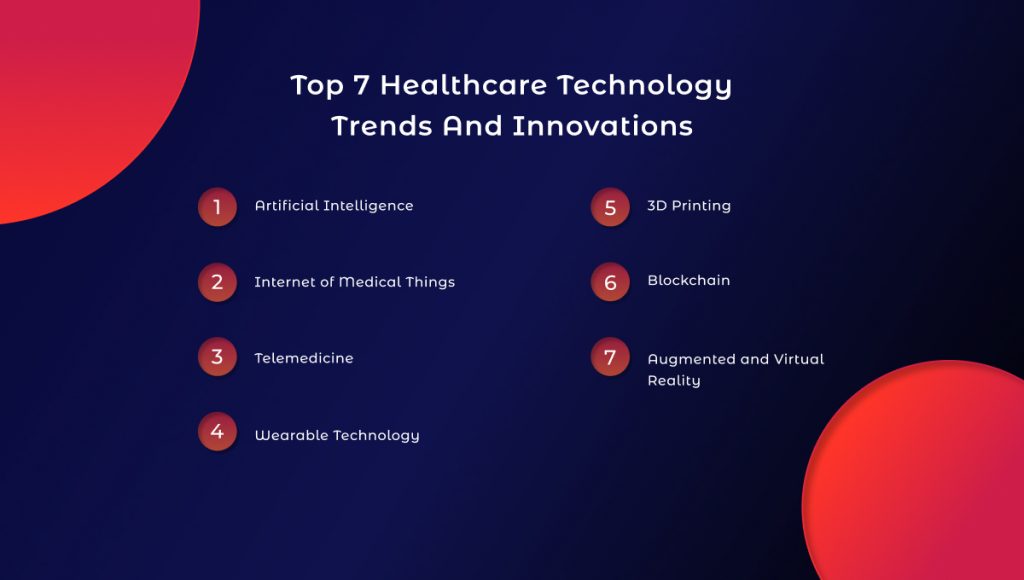
How Can Scimus Help?
Healthcare applications can help to streamline operations, improve patient care, and increase the efficiency of healthcare delivery. However, developing a healthcare application requires specialized knowledge of healthcare regulations, best practices, and technologies. Scimus can provide the expertise necessary to build a healthcare application that meets the needs of patients, healthcare providers, and other stakeholders.
We can work with healthcare organizations to identify their unique needs and requirements and to design a custom healthcare application that addresses those needs. This may involve developing a user-friendly interface that makes it easy for patients to access their health information, book appointments, and communicate with healthcare providers. It may also involve developing features for healthcare providers, such as electronic health records (EHRs), decision support tools, and clinical decision-making algorithms that can improve the accuracy and speed of diagnosis and treatment.
In addition to developing the application itself, Scimus can also help with testing and deployment. This may involve conducting thorough testing to ensure that the application is functioning properly and meeting regulatory requirements, and providing ongoing support and maintenance to ensure that the application remains up-to-date and secure. Overall, working with a Scimus will help you to build an effective healthcare application that can improve patient outcomes and enhance the delivery of healthcare services.

